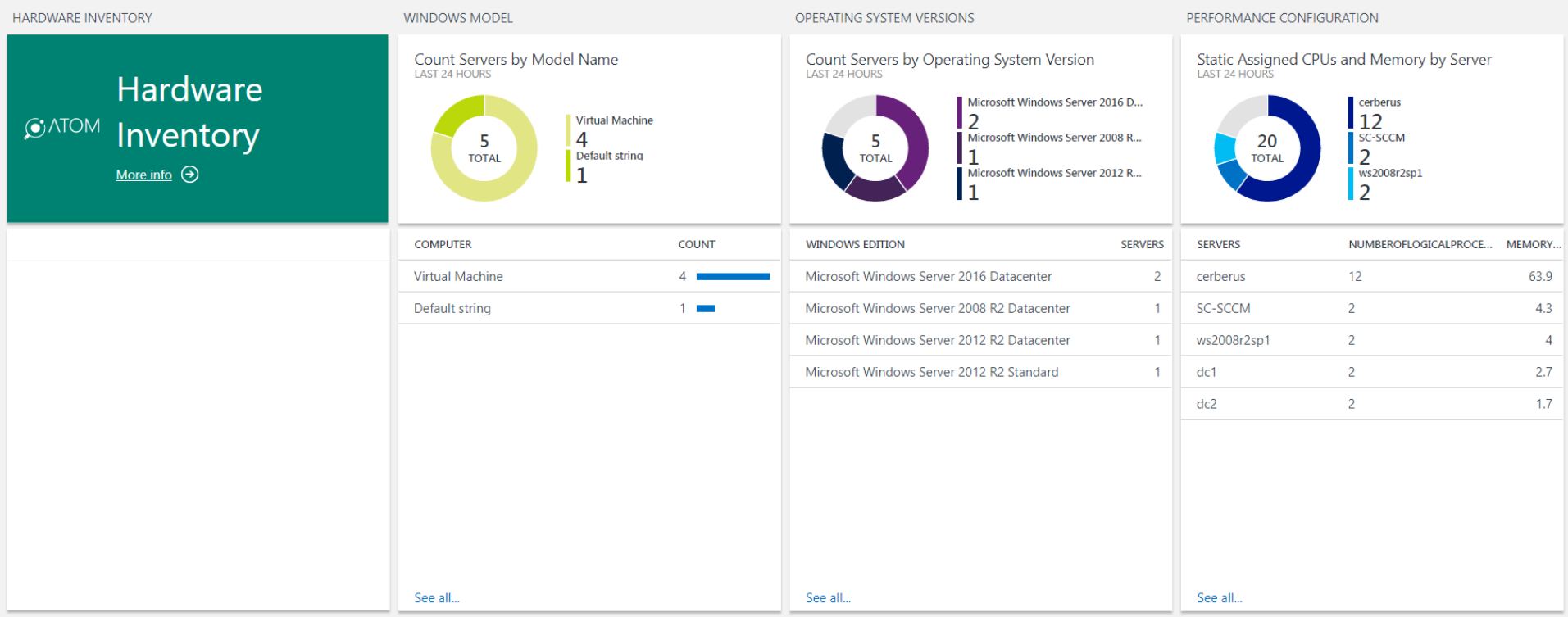Configuration Manager is designed to keep pace with Windows 10 updates to provide support for new Windows features as they become available. When Configuration Manager is integrated with Microsoft Intune, you can choose between multiple deployment and management options of Windows 10 that work best for your business.
- Microsoft Sccm Software Inventory Cycle
- Sccm Software Inventory Configuration
- Microsoft Sccm Software Inventory Pdf
Use software inventory to collect information about files on client devices. Software inventory can also collect files from client devices and store them on the site server. Software inventory is collected when you select the Enable software inventory on clients setting in client settings. You can also schedule the operation in client settings. Through integration with Microsoft Intune, you can extend your System Center Configuration Manager to manage PCs, Macs, and Unix/Linux servers along with cloud-based mobile devices running Windows, iOS, and Android, all from a single management console. Aug 02, 2018 How to Configure Software Inventory in SCCM. To configure software inventory in SCCM, perform the following steps. In the Configuration Manager console, choose Administration Client Settings Default Client Settings.Right click default client settings and click Properties.Now click on Software Inventory.What you see is options for configuring software inventory. When I say “software inventory”, I’m actually referring to the “hardware inventory” process (strange but true) in Configuration Manager that collects data from WMI classes, including the installed software, and not to be confused with the “software inventory” process in ConfigMgr which is used to inventory file types.
Learn moreWith the increasing speed of updates in Windows, iOS, and Android, your management solution needs to be able to keep up as well. Updates and servicing node in the Configuration Manager console provides more frequent and easier-to-apply updates for new features, cumulative updates, extensions for Microsoft Intune, and individual fixes.
Learn moreConfiguration Manager takes a user-centric approach to application delivery that allows administrators to create one application that can be delivered to all of a user’s devices. It evaluates device and network capabilities and optimizes delivery, whether through a local installation, streaming through App-V, or via a presentation server such as the Remote Desktop Services RemoteApp capability or Citrix XenApp.
Learn moreIntegration with Microsoft Intune provides a single administrative console for managing policies and comprehensive asset and compliance reporting across PCs as well as mobile devices, including Windows, iOS, and Android. With new on-premises mobile device management (MDM) capabilities, Windows 10 devices can now be also managed via MDM.
Learn moreConfiguration Manager reduces the complexity and cost of implementing virtual environments by providing a single, unified tool to manage all your client desktops, thin clients, mobile devices, and virtual desktops.
Learn more
Configuration Manager serves as the infrastructure for System Center Endpoint Protection. It delivers a single solution for malware protection, identification, and remediation of vulnerabilities, while giving visibility into non-compliant systems.
Learn moreYou can create a baseline for “desired configuration state” and ensure that all devices comply through auto remediation or alerts. Configuration Manager also integrates with System Center Service Manager to automatically create incidents on baseline drift.
Learn moreConfiguration Manager simplifies the complex task of delivering and managing updates to IT systems across the enterprise. IT administrators can deliver updates of Microsoft products, third-party applications, hardware drivers, and system BIOS to a variety of devices, including desktops, laptops, servers, and mobile devices.
Microsoft Sccm Software Inventory Cycle
Learn moreGet more out of your energy-saving hardware with a comprehensive set of centralized client power management tools. Configuration Manager works with the capabilities built into your Windows operating system to help you optimize power settings at a granular level.
Learn moreConfiguration Manager distributes operating systems to physical desktops, servers, laptops, and mobile devices across enterprise networks and eliminates the inefficiencies and errors associated with manually installing applications. With Windows 10, Configuration Manager can also manage in-place upgrades which significantly reduce the time and complexity of deploying Windows.
Learn moreConfiguration Manager displays client health evaluation results and client activities directly in the console, providing alerting and remediation capabilities if health statistics fall below established thresholds.
Learn moreAdministrators can have continuous visibility into hardware and software assets and usage. Asset Intelligence translates inventory data into information, providing rich reports that help administrators with software purchasing decisions, upgrade plans, and license reporting.
Learn moreConfiguration Manager can inventory hardware and software in your organization to help give you a view into what resources you have. With Configuration Manager, you can enable custom hardware inventory more easily and extend the inventory schema.
Learn moreSccm Software Inventory Configuration
Reporting in Configuration Manager helps you gather, organize, and present information about users, hardware and software inventory, software updates, applications, site status, and other Configuration Manager operations in your organization.